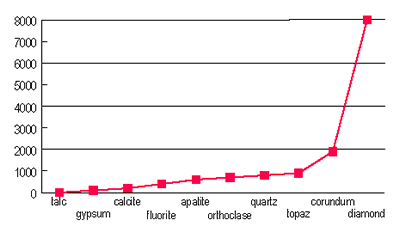Gem Lab
A gem lab has a collection of equipment allowing the gemologist to thoroughly inspect jewelry, determine and grade its qualities, calculate measurements, and arrive at an estimation of value.
The following list of equipment is included here merely to give you an idea of what is involved in identifying and appraising jewelry.
- Binocular 10-power microscope with dark field illuminator
- Diamondlite or color grader
- Dichroscope
- Fiber optic lighting
- Filters and lenses
- Leveridge gauge, millimeter gauge, calipers, and ruler
- Long and short wave ultraviolet lights
- Master set of 5 GIA-certified color grading diamonds (not cubic zirconium stones)
- Master set of colored stones or color communication system
- Metal testing acids and gold tip needles
- Penlight
- Photographic equipment
- Polariscope with interference figure sphere or lens
- Proportionscope
- Refractometer
- Scale, preferably electronic, that gives weight in carats, grams and pennyweight, to .001 (adapted with a balance to determine specific gravity)
- Spectroscope
- Thermal conductivity tester
This equipment is used to determine the type of gem, its carat weight, color, clarity, and geometric proportions, whether it has been enhanced, whether it is synthetic or natural or imitation. All this information is important in determining the value of a gem, and in writing a complete and descriptive appraisal for insurance. Without a proper gem lab, a retailer cannot be certain of the quality of jewelry he is selling. He must either take the word of the gem supplier or simply guess.
Gemstone Identification
Using equipment in a gem lab, gemologists rely on four basic tests for gem identification.
Hardness
The Mohs scale is used to rate mineral hardness. The higher the number, the harder a mineral is to scratch. Each mineral can scratch other minerals having equal or lower Mohs ratings.
The hardest is diamond, which scores 10 on the Mohs scale. Corundum (that is, ruby and sapphire), scores 9, meaning diamond is 100 times harder than sapphire or ruby. The softest is talc, with a Mohs rating of 1.

Specific Gravity
This is the ratio of the density of the gem to that of water at 4 degrees C.
Refractive Index
This is a measurement of the amount a light ray is bent as it enters or leaves a gemstone, expressed numerically.
Microscopic Examination
The gem is viewed internally from different perspectives using a microscope at 10-power magnification.
Gemstone Toughness & Hardness
A gem’s toughness should not be confused with its hardness.
Toughness means resistance to breaking, chipping or cracking — in general, how well a stone holds up under mechanical stress, such as impact from a fall. Toughness rating is usually stated as exceptional, excellent, good, fair, or poor.
Hardness refers to how resistant a mineral is to scratching. It is described as a score between 1 and 10 on the Mohs scale.
Diamond, for example, is the hardest mineral, with a Mohs rating of 10, but its toughness rating is only good. Hematite, on the other hand, has an excellent toughness rating, but its hardness is only between 5.5 and 6.5.
 Buyer's
Tip
Buyer's
Tip
Stones with less than excellent toughness ratings can be particularly vulnerable to damage if they are poorly cut. For example, a diamond girdle cut too thin could be chipped when the gem is being set. This points again to the importance of good cut proportions.
Determining Value
Gem Lab equipment is also used to determine a gem’s carat weight, color, clarity, and geometric proportions, whether it has been enhanced, whether it is synthetic or natural or imitation. All this information is important in determining the value of the gem, and in writing a complete descriptive appraisal. Without a proper gem lab, a retailer cannot be certain of the quality of the jewelry he is selling. He must either take the word of the gem supplier or simply guess.
Shopping Considerations and Caveats
- Jewelers who lack proper knowledge and lab equipment can be fooled even by cheap imitations, such as moissanite. If a retailer can’t tell an imitation from a real diamond, he can certainly not determine more subtle qualities, such as clarity grade or cut proportions.
 Buyer's
Tip
Buyer's
Tip
When buying jewelry or having jewelry appraised, ask if the store has a gem
lab. You can even ask to see the equipment – all of which would fit
comfortably on a kitchen table.
